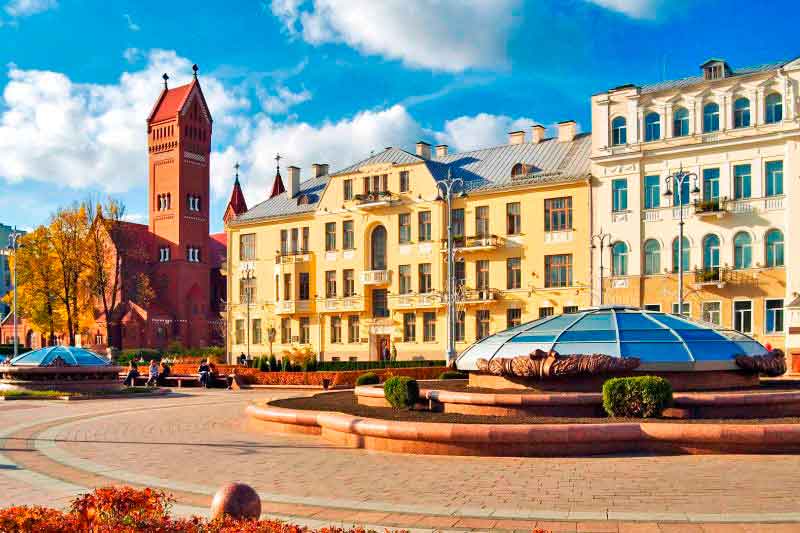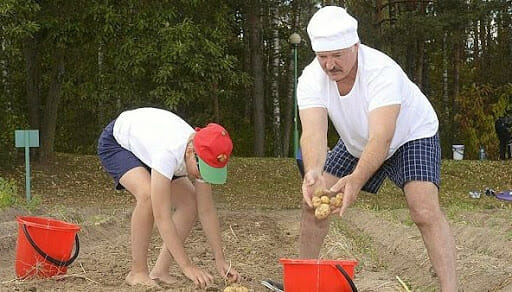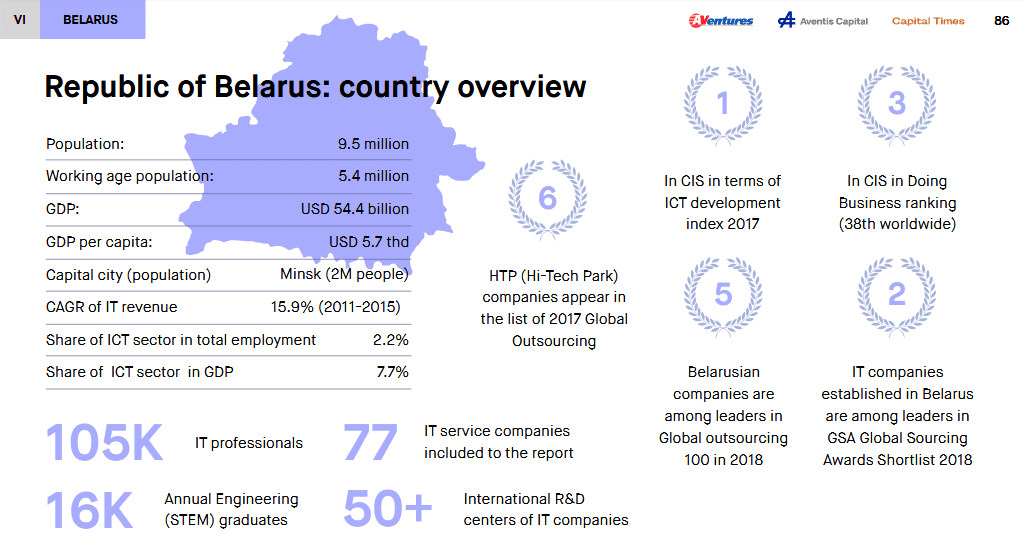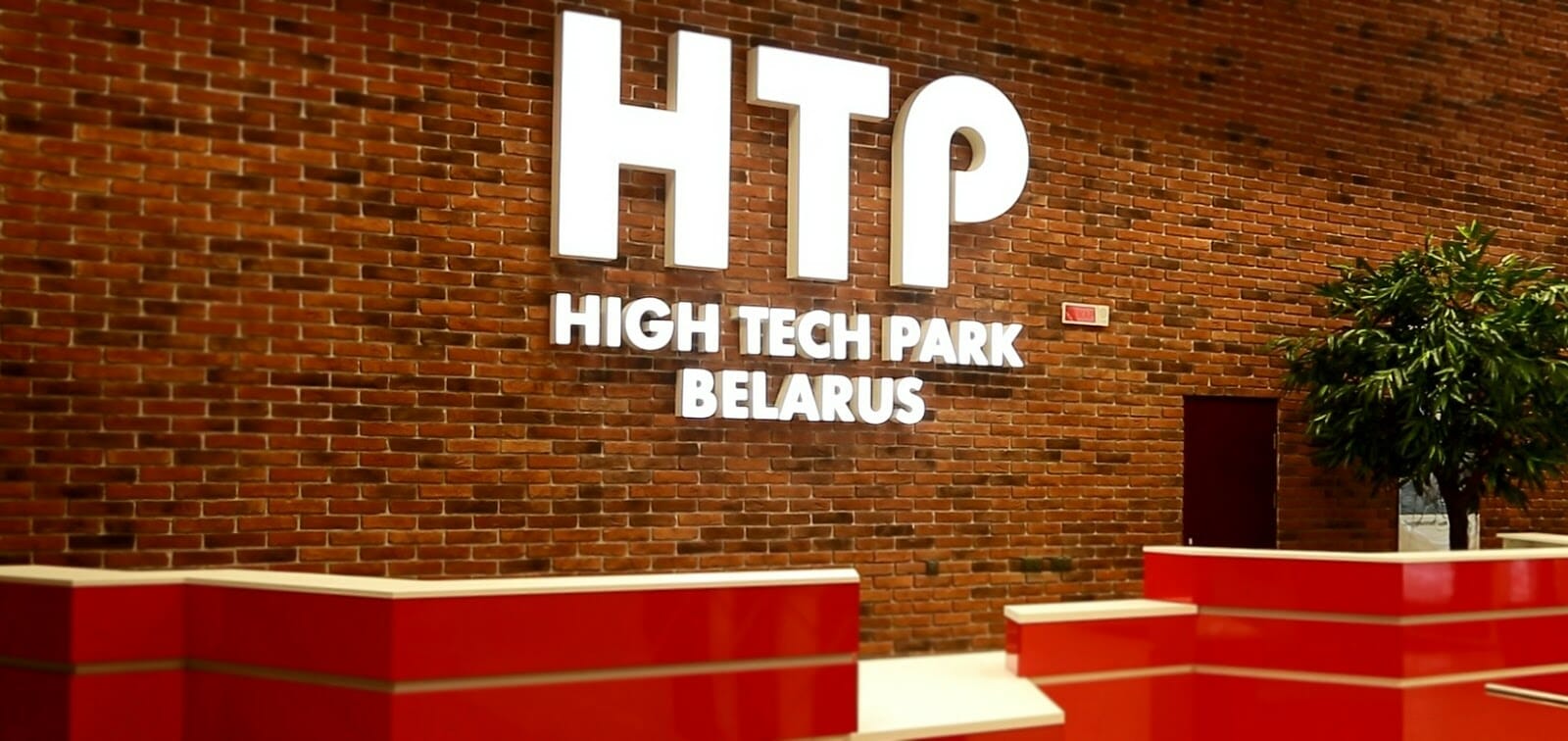Belarus: the Slavic Silicon Valley?

Let’s make a test.
If I say “Belarus”, what is the first thing that comes to your mind?
Based on my long experience, there are two or three likely answers to this question, depending on your country of origin.
Potatoes, the Chernobyl disaster, and a timeless president (aka Lukashenko) with a visceral passion for colorful statements.
Yes, but not only…
Well, that’s all true. Especially the presidential part.
But there’s a lot more to find in this relatively mysterious country between Poland and Russia.
What if I told you that Belarus is probably Eastern Europe’s main IT hub?
I already perceive your skepticism. Ok, if you don’t believe me
… go on reading!
Mr. President enjoying his favorite hobby

Belarusian IT now
Data on the current state of the IT sector in Belarus is truly encouraging.
- Today, Belarus is one of the world leaders for the export of IT services per capita. No jokes: 108 dollars vs the 58 dollars per capita of the USA. Belarus reigns (almost) supreme!
- Thanks to the HTP and the decree on cryptocurrencies, Belarus is among the top ten countries for IT-business friendly reforms according to the World Bank.
- IT represents 5.5% of the current local GDP. By 2022, according to the most reliable projections, IT’s share of GDP will be increased to 10%.
- In 2018, IT had a 2.2% share of overall employment and accounted for 14.5% of all new jobs in the country.
- Ten Belarusian IT companies appear in the list of the top 500 software and service providers.
Some Belarusian apps you probably know
If you prefer names to numbers, here are some famous Belarusian ones:
Viber
The slav brother of WhatsApp, with over a billion registered users on the network.
World of Tanks videogame: PEW! PEW! BANG!
Flo
The first women’s health app with scientifically accurate predictions of menstruation and one of the top 5 free health apps in the USA.
“Today, Belarus is one of the world leaders for the export of IT services per capita.”

IT Outsourcing in Belarus
The governmental initiatives to support the IT sector, complemented by low levels of state interference and tax regulation, guarantee foreign companies a significant simplification for outsourcing processes in Belarus.
The low regulation also concerns the new visa-free regime, extended to 30 days in July 2018.
In the IT outsourcing environment, Belarus is well known as a high-qualified, reliable, and affordable business partner.
This good reputation is further strengthened by the growing number of foreign professionals who have moved to Belarus and by the numerous Belarusian developers who work with foreign companies.
For example, the Spaghetti boy who wrote this article and the Mexican coder who tries every time to steal his pasta.
The Belarusian path to becoming an IT leader
Ok, cool! But how did Belarus manage to become the most important (and least known) IT center in Eastern Europe?
Let’s start with a bit of history.
The love affair between Belarus and IT is definitely not something new.
During Soviet times, the BSSR (Byelorussian Soviet Socialist Republic) was already famous for information technology.
In fact, The country could boast two important tech-focused universities and the Research Institutes of Electronic Computers.
“During Soviet times, the BSSR was already famous for information technology.”
Goodbye, Lenin!
After the Soviet Union collapsed, the program for creating personal computers was closed. At the same time, the West was interested in expanding its business to the former USSR.
Thanks to the initiative and talent of many local specialists, important companies like IBM focused their attention on Minsk instead of Moscow and created the first partnerships.
Other companies, destined to become future leaders of the IT sector, were founded from scratch. For example, EPAM in 1993.
In 2001, the Scientific and Technological Association Infopark was created by presidential decree in partnership with BSU, the largest Belarusian university. The project was aimed to offer favorable conditions for IT specialists in Belarus and avoid a diaspora of local talents.
The creation of Hi-Tech Park
The decisive and game-breaking step happened when Valery Tsepkalo, former Belarusian ambassador in the United States, came back to Belarus, becoming the president’s advisor on science and technology.
Tsepkalo promoted the idea of establishing a sort of eastern European Silicon Valley, based on some undeniable facts:
- The demand for IT specialists around the world was growing fast and could not be satisfied just by American or European programmers
- Belarusian developers were much cheaper than their western colleagues
- The costs of market entry in the IT sector were minimal. With a small budget, it was possible to create products that could be sold all around the world.
On Tsepkalo’s proposal, President Lukashenko (yes, still THAT guy) created Hi-Tech Park in 2005 and placed the former ambassador as its head.

What about Hi-Tech park?
The idea behind Hi-Tech Park (or HTP) was to create a technological hub, in order to attract new investments and increase the export.
According to the founding presidential decree, any company and any entrepreneur involved in the development, implementation, and export of communication and information technologies could join the project, after passing through a selection process.
The park’s fiscal benefits
Park residents enjoyed and still enjoy a variety of benefits. Needless to say, the most popular are of a fiscal nature.
“Pecunia non olet”, uh?
Specifically, The Hi-Tech Park members are exempt from all corporate taxes, including value-added tax and income tax.
Individual income tax for employees of the resident companies is fixed to 9% and isn’t included in the total annual income.
This particularly favorable tax regime (a gentle euphemism to say “tax haven”) is one of the main reasons for the success of the project.
Currently, the park can boast about 400 companies and more than 35 000 employees.
Pretty sweet, considering that we talk about a country of 10 million people!
“The Hi-Tech Park members are exempt from all corporate taxes, including value-added tax and income tax.”
Some numbers about HTP
The composition of the park residents is fairly balanced.
- 41% of HTP residents were set up by local investors
- 24% are joint ventures
- 35% are fully foreign investments
Talking about clients, 92% of the software produced in HTP accounts for exports.
- 49% to Europe
- 45% to the USA and Canada
- 4% to Russia and CIS
Recent developments
In 2018, a new decree “On the Development of the Digital Economy” was approved.
This document fixed a 50-years special legal regime for the park and legally promoted the circulation of digital currencies based on blockchain.
After this initiative, the number of companies entering the HTP increased by 10 times and the Belarusian high tech sector enjoyed a skyrocketing reputation.
We made IT. Time to make IT specialists!
Although the technology sector was already consolidated in Belarus since the times of the Soviet Union, a huge boost was given in the third millennium.
Because of the increasing demand for IT specialists, companies and educational institutions promoted stronger cooperation to train new developers.
IT corporations started to offer free vodka and Kalashnikovs practical experience to students in joint laboratories (up to the 52 actually existing).
This long-term investment has paid off. Today, in fact, a quarter of students choose technical specializations and Belarusian universities offer about 70 IT-related courses in constant increase.
Not only potatoes!
Belarus can boast an IT sector in constant growth, thanks to initiatives like the Hi-Tech park and low levels of government interference.
And don’t forget about our developers. Belarusian developers are the heart and soul of this process of renewal.
For this country, outsourcing is a way to improve its reputation and to be remembered not only as a country of potatoes, radiations, and everlasting presidents.
Even if we are sincerely proud of our potatoes.
About the other two things… meh.
Need support with your software development?

Andrea Di Stefano
Andrea is a journalist and teacher of Italian with a long-standing interest in tech and media. He loves to handle touchscreens, but to correct his students’ homework he prefers the good old red marker on paper!
